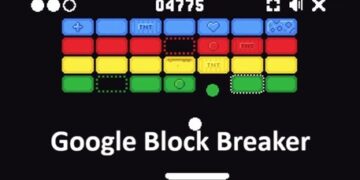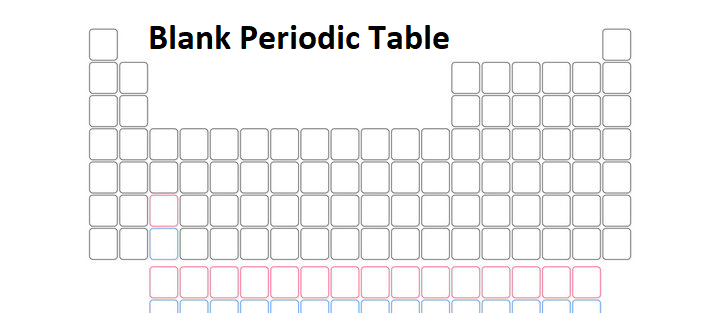Blank Periodic Table The periodic table is one of the most iconic and powerful tools in science. It represents the fundamental building blocks of the universe — the chemical elements — organized in a way that reveals patterns, properties, and relationships. Yet, beyond its colorful charts and complex data, there exists an underrated educational resource: the blank periodic table.
At first glance, a blank version of the periodic table might seem simple, even empty. But in reality, it is one of the most versatile and effective tools for learning, teaching, and mastering chemistry. Whether you are a student preparing for an exam, a teacher looking for innovative classroom activities, or a science enthusiast eager to deepen your understanding, the blank periodic table can transform the way you engage with chemical elements.
In this article, we will explore the importance, uses, benefits, and creative possibilities of a blank periodic table — and why it remains a timeless resource in chemistry education.
The Periodic Table: A Brief Overview
Before diving into the power of a blank version, it’s worth revisiting what the periodic table represents. Created by Dmitri Mendeleev in the 19th century, the periodic table organizes elements according to their atomic number, electron configuration, and recurring chemical properties. Each column, called a group, contains elements with similar characteristics, while each row, known as a period, shows the progression of properties as atomic numbers increase.
The periodic table is more than a list of elements — it is a roadmap of matter. It shows trends in electronegativity, atomic size, ionization energy, and chemical reactivity. It reveals how elements bond, how they react, and how they form the substances that make up everything from water and air to DNA and stars.
But while the completed table is a powerful reference, a blank periodic table offers something different: it is a canvas for discovery.
What Is a Blank Periodic Table?
A blank periodic table is exactly what its name suggests — a template of the periodic table layout without the element names, symbols, or atomic numbers filled in. The structure remains the same: rows and columns are in place, blocks are arranged according to their electron configurations, and the familiar shape of the periodic table is intact.
However, the absence of details turns this empty template into a dynamic learning tool. Instead of simply reading and memorizing, you engage actively with the material — writing, recalling, predicting, and connecting concepts on your own.
Why a Blank Periodic Table Matters in Chemistry Education
Memorizing the periodic table is one of the most fundamental challenges in early chemistry education. Students are often required to know the symbols, atomic numbers, and positions of elements. However, passive memorization is rarely effective. This is where a blank periodic table proves its value.
Filling in a blank table transforms memorization into active recall — one of the most powerful methods of learning. Instead of simply recognizing information, students retrieve it from memory, strengthening neural connections and improving long-term retention.
Moreover, the blank periodic table encourages a deeper understanding of patterns and relationships rather than rote memorization. By reconstructing the table, learners begin to see why elements are placed where they are, how their properties change across periods and groups, and how structure influences behavior.
Key Benefits of Using a Blank Periodic Table
1. Enhances Memory and Recall
One of the most obvious benefits of using a blank periodic table is memory improvement. Regularly filling out a blank template reinforces knowledge of element symbols, atomic numbers, and positions. Over time, this active engagement builds strong mental associations, making it easier to recall information during exams or experiments.
2. Encourages Deeper Understanding
A blank table challenges students to think beyond memorization. As they reconstruct it, they notice patterns — for example, that noble gases appear at the far right, that halogens sit just beside them, or that alkali metals line the far left. Recognizing these patterns fosters conceptual understanding, which is crucial for applying knowledge in real-world scenarios.
3. Develops Critical Thinking Skills
Using a blank periodic table is not just about filling in blanks; it’s about solving a puzzle. Students must think critically about where each element belongs and why. This analytical process enhances problem-solving skills and encourages logical reasoning.
4. Promotes Active Learning
Active learning is far more effective than passive reading or rote memorization. Filling in a blank table, labeling groups, predicting trends, and discussing element properties all involve active participation. This engagement leads to better comprehension and retention of complex concepts.
5. Customizable for Different Learning Levels
Blank periodic tables are versatile tools that can be adapted for different levels of difficulty. Beginners might focus on filling in only the first 20 elements. Intermediate learners might add atomic numbers, electron configurations, or oxidation states. Advanced students might annotate trends, bond types, or specific chemical behaviors.
6. Useful for Teachers and Educators
For teachers, blank periodic tables are valuable assessment tools. They can be used for quizzes, classroom activities, or group exercises. Educators can also customize them to focus on specific topics — such as transition metals, lanthanides, or periodic trends — depending on the lesson plan.
Creative Ways to Use a Blank Periodic Table
The blank periodic table is not limited to traditional memorization exercises. It can be used in creative and interactive ways that make chemistry fun and engaging. Here are some innovative approaches:
Periodic Table Quizzes
Turn the blank periodic table into a quiz. Provide hints or clues for each element — such as atomic number, group, or physical property — and ask students to place them correctly. This gamified approach boosts motivation and reinforces learning.
Group Labeling Activities
Instead of filling in every element, ask students to label the major groups: alkali metals, alkaline earth metals, transition metals, halogens, noble gases, and so on. This helps them understand the structure and classification of the table without overwhelming them with details.
Property Prediction Exercises
Once students have filled in the table, challenge them to predict trends. Which elements are most reactive? Which have the highest electronegativity? How do atomic radii change across a period? These exercises promote higher-order thinking and application of knowledge.
Color-Coding and Visualization
Encourage students to color-code different groups or blocks. For example, s-block elements might be blue, p-block green, d-block orange, and f-block purple. Visual organization helps learners see relationships and remember groupings more effectively.
Creative Projects and Posters
Students can turn blank periodic tables into artistic projects, creating posters that highlight element properties, uses, or historical discoveries. This approach integrates creativity with science and makes learning more enjoyable.
How to Master the Periodic Table Using a Blank Template
Mastering the periodic table is not about cramming; it’s about building understanding step by step. Here’s a strategic approach to using a blank periodic table effectively:
Start with the Basics
Begin with the first 20 elements — hydrogen to calcium. These are the most commonly encountered in early chemistry and form the foundation of the table.
Learn Group by Group
Focus on one group at a time. For example, memorize all alkali metals, then all halogens. Grouping elements helps you understand their shared properties and trends.
Use Mnemonics and Memory Aids
Mnemonics can make memorization easier. Simple phrases or stories associated with element symbols can boost recall when filling in a blank table.
Repeat and Review Regularly
Consistency is key. Regularly practicing with a blank periodic table helps reinforce knowledge. Each attempt builds confidence and accuracy.
Integrate Concepts
As you become more comfortable, go beyond names and symbols. Add atomic numbers, oxidation states, or electron configurations. Understanding these deeper details strengthens your mastery of chemistry.
The Blank Periodic Table Beyond the Classroom
The value of a blank periodic table extends far beyond the classroom or academic settings. It serves as a practical and versatile resource for professionals across many scientific fields. Researchers often rely on it to review the positions and properties of elements quickly, free from unnecessary details. Scientists use blank versions to annotate specific groups or highlight elements relevant to their work, making complex data easier to interpret and analyze. Industry professionals also find them valuable for creating customized reference charts, which can support laboratory experiments, product development, or quality control processes.
Beyond professional use, blank periodic tables hold great potential for communication and creativity. Science communicators frequently incorporate them into educational materials, visual presentations, and infographics to simplify complex topics for broader audiences. Even hobbyists and enthusiasts can enjoy the challenge of filling them out from memory, using them for trivia games, or incorporating them into DIY science projects. This versatility makes the blank periodic table not just a learning tool, but a bridge between knowledge, application, and discovery.
The Psychological Advantage of a Blank Canvas
There is also a psychological aspect to using a blank periodic table. A blank sheet invites curiosity. It challenges the mind to fill the gaps and make connections. It encourages exploration rather than passive absorption.
This active engagement aligns with the concept of desirable difficulty — the idea that learning is more effective when it is challenging but achievable. A blank periodic table strikes that perfect balance: it pushes learners to think, recall, and reason, all while providing a familiar framework.
Digital and Interactive Blank Periodic Tables
While traditional paper templates remain popular, digital versions are gaining traction. Interactive blank periodic tables on tablets, computers, or smartboards allow students to drag and drop elements, check their answers instantly, and receive feedback in real time.
Digital tools also offer customization — such as hiding certain sections, randomizing element positions, or integrating quizzes — that enhance the learning experience. This blend of traditional structure with modern technology makes blank periodic tables more accessible and engaging than ever.
Common Mistakes to Avoid When Using a Blank Periodic Table
While the blank periodic table is a highly effective learning tool, there are several common pitfalls that learners should avoid to make the most of it. One frequent mistake is relying solely on memory without understanding the underlying reasons for each element’s placement. It’s important to go beyond simple recall and focus on the relationships and principles that structure the table. Another common oversight is ignoring trends and patterns. Memorizing the sequence of elements can be helpful, but true mastery comes from recognizing periodic trends such as electronegativity, atomic radius, and reactivity, which reveal the deeper logic of the table.
Consistency and gradual learning are also key to success. Many learners make the mistake of filling out a blank periodic table once and assuming they have mastered it, but long-term retention requires repeated practice over time. Additionally, trying to absorb too much information too quickly can be overwhelming and counterproductive. A better approach is to start with the basics — such as element symbols and atomic numbers — and gradually layer on more complex details as your understanding deepens. By avoiding these common pitfalls, you can turn the blank periodic table into a powerful and rewarding learning tool.
The Future of Periodic Table Learning
As science education evolves, tools like the blank periodic table will continue to play a vital role. The future may see more interactive, AI-assisted platforms that customize blank table exercises based on individual learning progress. Augmented reality could bring the periodic table to life, allowing students to place elements in a 3D space and explore their properties visually.
Yet, despite technological advancements, the core idea remains timeless: the act of actively engaging with the periodic table — whether on paper or screen — builds knowledge, understanding, and confidence in the language of chemistry.
Conclusion: The Blank Periodic Table as a Gateway to Discovery
The periodic table is one of science’s greatest achievements — a master key to the building blocks of matter. But its blank counterpart is equally powerful, not as a static reference, but as a dynamic tool for learning, exploration, and creativity.
A blank periodic table is more than an empty chart. It is a puzzle to solve, a memory to build, and a story to understand. It challenges students to think critically, helps teachers design engaging lessons, and allows scientists to approach familiar concepts from new perspectives.
By embracing the blank periodic table, you transform learning from passive memorization into active discovery. Whether you are just beginning your chemistry journey or refining your expertise, this simple yet powerful tool will continue to unlock the secrets of the elements — one square at a time.

















































































